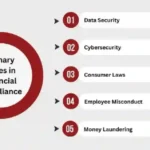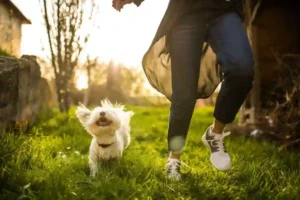Living an active lifestyle isn’t just a trend—it’s a commitment to feeling better, moving more, and getting the most out of life. But honestly? It’s harder than it sounds. I mean, I’ve tried every fitness trend under the sun, from yoga in the park (remember that sunburn?) to weekly 5k runs that lasted all of 3 days. If anyone knows how to stumble into an active lifestyle, it’s me. But here’s the kicker: I’ve learned a lot along the way, and it’s not just about hitting the gym and hoping for the best.
Why an Active Lifestyle Matters
Let’s talk about why all this matters. We’re constantly told to move more—“Get up off the couch, stop binging Netflix, etc.” Sure, it sounds simple, but in reality, the pull of a cozy blanket and Netflix’s next episode button is hella strong. But here’s what I’ve figured out: Living an active lifestyle isn’t about perfection. It’s about consistency. For example, I’ve spent weeks dragging myself to morning workouts like a zombie, but it wasn’t until I accepted that “perfect” doesn’t exist that I actually started enjoying it.
An active lifestyle helps reduce stress, keeps your body strong, and, according to my friend Sarah, helps you sleep better (she’s onto something, and I swear by her coffee-fueled workouts). Plus, I can’t even count the times my regular walks around the block gave me a fresh perspective on the day. It’s a simple thing, but it works.
But here’s a thing I didn’t realize until way too late: It’s not just about what you’re doing during exercise. It’s about everything around it—nutrition, sleep, and mental recovery. So, let’s dive in.
Building the Right Exercise Routine: What Works (and What Doesn’t)
You’ve heard it a thousand times: “Cardio is key!” Yeah, yeah. But let’s be real. My first attempt at “cardio” was running… except my legs betrayed me after 5 minutes. Oops. (Side note: It’s a miracle I didn’t sprain something.) Anyway, what I wish someone had told me back then is that a good workout isn’t just about burning calories, it’s about variety.
The Power of Cardio
Okay, let’s start with cardio. I used to think it was just about running, and let’s be honest—I’ve never been an athlete. The idea of running a 5k used to make me break out in a cold sweat. But here’s where I found my groove: Anything that gets my heart rate up counts. Walking, biking, swimming, even jumping rope like a child? All of it is legit cardio. Find what works for you and stick with it.
Some days, I just throw on a podcast and go for a walk, and that’s enough. But when I’m feeling ambitious? I’ll jump into a spin class and pray for mercy. Point is, cardio isn’t one-size-fits-all, and that’s okay.
Strength Training: Don’t Skip This!
The first time I picked up weights, I definitely wasn’t “lifting”—I was gripping them, mostly out of fear. I remember staring at my set of dumbbells thinking, “Please don’t let me drop this on my foot.” Spoiler alert: I did, and it wasn’t pretty. But guess what? I kept going. Strength training is key—whether you’re lifting weights, doing bodyweight squats, or planking like you’ve never planked before. It builds muscle, it strengthens bones, and for me, it’s a workout I can feel the next day.
Look, you don’t have to turn into Arnold Schwarzenegger, but incorporating two to three sessions a week of strength training makes a massive difference in how you feel and how your body adapts.
Flexibility: Stretch It Out
I thought yoga was just for people who had the time and patience to bend themselves into human pretzels. Spoiler alert: I didn’t. But then my back started aching from too many hours hunched over a desk. Yikes. So, I tried yoga for maybe 15 minutes each day, and folks, I felt better. Stretching, Pilates, yoga—all of these activities help keep your joints moving and muscles happy. Flexibility isn’t just about being able to touch your toes (though I finally can). It’s about preventing injuries and making sure your body doesn’t feel like it’s aging faster than you are.
Rest & Recovery: Don’t Skip It
I don’t know about you, but I used to think that recovery meant lying on the couch with Netflix. And yes, sometimes that’s the case. But more importantly, active recovery matters. Walking, stretching, foam rolling—all of that aids in muscle recovery and keeps you feeling fresh. Trust me, that time you spent on your feet all day running errands? Yeah, your legs will thank you for taking it easy the next day. Trust me on this.
Fueling Your Active Lifestyle
Now, let’s talk food. I know, I know. Diets are always a hot topic. But after several failed attempts at “eating clean” (don’t even get me started on the kale chips phase), I realized it’s all about balance. Like, my first attempts at clean eating were pure disaster. Case in point: That time I tried “meal prepping” for an entire week and ended up eating cereal for dinner by Wednesday. (Note to self: never trust “Pinterest-friendly” meal plans again.)
Anyway, food fuels your active lifestyle. Here’s the lowdown:
Hydration: Sip, Don’t Chug
You know the drill—drink water, stay hydrated. I didn’t take this seriously until I once found myself dizzy mid-hike. Hilarious, right? But not really. Now, I make it a habit to drink water regularly, not just when I’m parched. Keep that water bottle close!
Pre- and Post-Workout Nutrition
Okay, let’s get real for a sec. Pre-workout snacks should give you some energy—think a banana, a handful of nuts, or a yogurt. Post-workout? Protein is the name of the game. Don’t get fancy with it. Grab a protein shake or a sandwich with some lean protein. Simple and effective. It’ll help you recover faster, and I’m all about that.
Sleep: Your Secret Weapon
I’ll be honest: I used to think sleep was optional. Big mistake. Ever tried working out when you’ve had 4 hours of sleep? No? Well, I’ve done it, and lemme tell ya—everything hurts, you feel sluggish, and you get cranky faster than a toddler who missed their nap.
These days, I try to prioritize sleep. Not because I’m a saint (I’m not), but because I learned the hard way that without it, I’m useless. Aim for 7-9 hours of quality sleep every night to help your body recover and to keep your energy levels up. It’s not just about being well-rested—it’s about keeping that active lifestyle sustainable.
Consistency: The Key to It All
Fast forward past three failed attempts, and here’s what I’ve learned: It’s not about having one “perfect” week of workouts. It’s about making exercise a regular part of your routine. Whether you’re walking, running, stretching, or lifting, as long as you keep moving, you’re on track.
So, find what works for you and stick with it. My workout schedule now looks nothing like it did a year ago, but that’s the point. It’s a journey, not a race. And remember: you don’t need to be perfect, just consistent.
Final Thoughts
An active lifestyle isn’t a one-size-fits-all kind of thing. It’s about finding your rhythm, making adjustments, and sticking with it—even when you don’t feel like it. I’ve learned that it’s less about perfection and more about consistency and variety. So, go ahead and find something that works for you, and just get moving. You got this.










Important Posts
The Connection Between Gut Health and Overall Wellness
Health & Fitness Tips – Stay Fit, Eat Well & Live Better
How to Start Running: Tips for Beginners